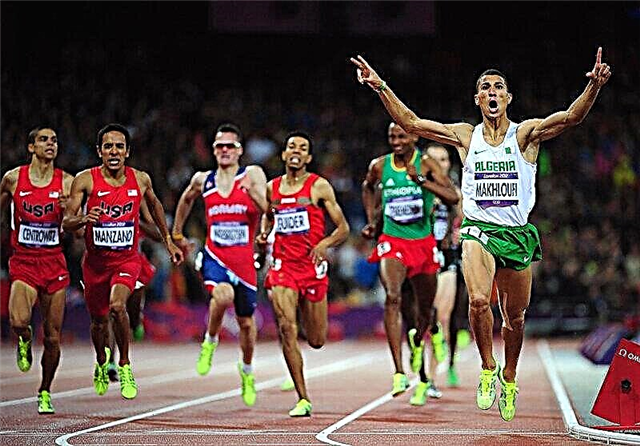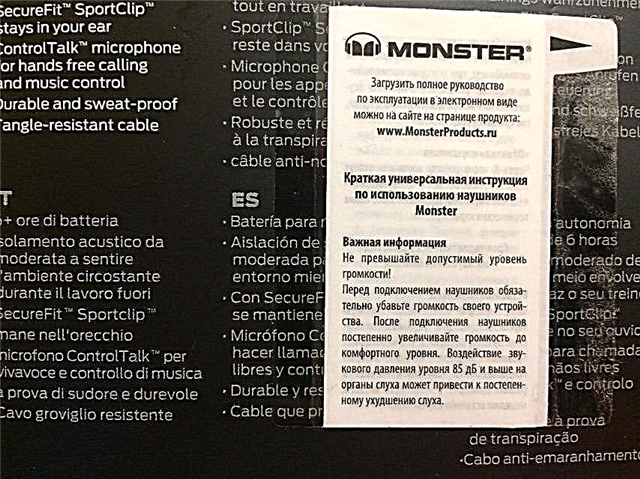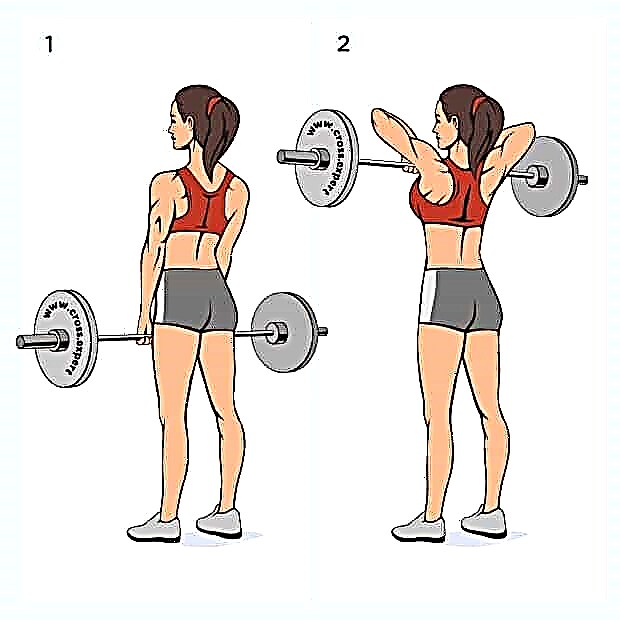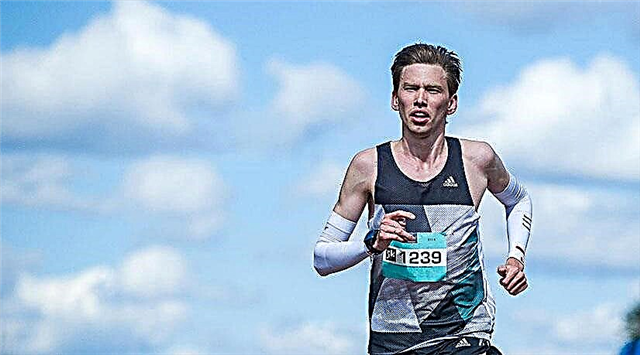One-arm dumbbell row is an exercise without which it is impossible to build a truly voluminous and muscular back. This exercise, like all other horizontal rows for the back, is aimed primarily at increasing the thickness of the back. Perform it in one workout with basic vertical rows on the back (pull-ups on the bar, pull of the upper block with a wide grip) and you will gain a strong, voluminous and proportional back, each muscle of which will have good relief.
Nearly everyone who works in an office and is inactive has S-shaped scoliosis. At the same time, his back does not look completely straight, so the one-way nature of the movement will also help correct the imbalance in the muscular development of the back, if any.
One-handed dumbbell row is universal - in this exercise, it is easy to feel the stretch and contraction of the lats of the back. It is suitable for almost every athlete to perform, if there are no serious contraindications, which we will also discuss in today's article.
What muscles work?
The main working muscle group when pulling a dumbbell in an incline with one hand is the latissimus dorsi. Moreover, we can vary the load and load one or another segment of this muscle group, depending on the level of inclination of the body. For example, when pulling a dumbbell on a bench with one hand, the angle of inclination of our body is almost 90 degrees. In this version, the lower part of the latissimus dorsi works more. If we do a dumbbell row with one hand in an emphasis on some kind of elevation, for example, a dumbbell row, the load mainly falls on the top of the lats.
In addition to the lats, part of the load is taken by the posterior deltas, rhomboid and trapezius muscles, spinal extensors, abdominal muscles and biceps.

The benefits of exercise and contraindications
As with any strength exercise, the one-handed dumbbell deadlift brings undeniable benefits in muscle development. But, at the same time, there are some contraindications to its implementation. There are few of them, but every athlete must know about them in order to avoid the risk of injury or aggravation of existing health problems.
Benefits of Bent Over Dumbbell Rows
The biggest benefit of a one-arm dumbbell row is that, unlike other basic back exercises, this exercise works more in isolation on our back muscles. We do not have to be distracted by constantly holding the body in the correct position and preserving natural lordosis in the lumbar spine.
By alternating different inclinations with each training week, we work the latissimus dorsi along their entire surface. This will certainly lead to an increase in strength and muscle mass in the back. Well-developed latissimus dorsi creates an athletic V-shape and improves posture. They also visually expand the shoulder girdle and chest. One-handed dumbbell rows increase strength in basic free weights such as deadlift, bench press, or chest lift.
Contraindications to deadlift
However, not all athletes should pay careful attention to this exercise. Unfortunately, it is strictly contraindicated for some athletes. Any free-weight horizontal row creates a strong axial load on the spine. For this reason, one-handed dumbbell rows are not recommended for athletes with hernias, protrusions, hyperkyphosis, or hyperlordosis.
In addition, using a dumbbell row with 1 hand in an incline, you can not only aggravate existing problems, but also create new ones. Many beginners neglect the correct technique when performing bent-over dumbbell rows, trying to take on a larger working weight. This is fundamentally wrong - too much burden weight overloads the shoulder and elbow ligaments and joints. There is also a high chance of serious spinal injury or pinching of nerve endings in the cervical or thoracic spine.
Exercise technique
A competent technique for performing a dumbbell row with one hand, followed in every detail, is the key to success in any sports discipline, be it bodybuilding, powerlifting or functional training. It is especially important to observe the technique of pulling a dumbbell to the belt with one hand for CrossFit athletes. This is due to the fact that most of them try to perform exercises in the most explosive style in order to keep within a shorter interval of time.
However, we strongly recommend making an exception for the one-arm dumbbell row while standing. Because any technical mistake can lead to serious consequences, harm your health and nullify any of your progress.

Initial position
Take a dumbbell and get into the correct starting position. You can perform a one-handed dumbbell deadlift with one hand and one knee on a horizontal bench while tilting your body down to nearly a right angle. So the load will be focused on the lower lats.
Another option is a dumbbell row in an incline standing with two hands alternately. In this case, you need to rest with one hand on a dumbbell rack or other hill, put your leg forward and take your pelvis back a little, keeping your torso tilted at about 45 degrees. In this position, the upper part of the broadest muscles will work more, as well as the rhomboid muscle and the posterior delta. Determine in which setting you feel the work of the back muscles better, or alternate these options at each workout.

Focus on the back
Whichever version of the body tilt you choose, the technical features of the movement will be the same. We keep our back straight, look forward, do not round the thoracic spine. It is allowed to use an athletic belt when working with serious weights, as well as wrist straps or hooks if you want to take the maximum load off your biceps and forearms.
Dumbbell lift
Start lifting the dumbbell up while exhaling. The movement should be carried out slightly in an arc. The dumbbell not only rises up, but also retracts to the belt - so the load on the broadest muscles of the back will be of a peak nature. Try not to include your biceps, for this focus on the movement of the shoulder blades. Our task is to raise the scapula as high as possible and move it slightly towards the center. At the same time, the elbow should be located slightly above the level of the ribs.

Reverse movement
Take a short pause in the top position, trying to "squeeze" the working muscle as hard as possible. Then gently lower the dumbbell down, inhaling and stretching the working muscle. It is necessary to lower the dumbbell in a controlled manner, without relaxing the lats and without "dropping" the dumbbell down. In the lower position of the projectile, we also make a short pause, slightly relaxing the scapula and hand in order to stretch the muscle fascia as much as possible. After that we do one more repetition.
Useful Tips
Let's break down a few important technical tips to help you get the most out of this exercise:
- The weight of the dumbbell should be such that it does not pull you along when lowering. The thoracic spine must remain in a stable position. There should not be any bending down under the weight of the dumbbell.
- One-handed dumbbell rows allow for a little cheating on the last reps. But make sure that the dumbbell does not go through the entire positive phase of the inertia movement and does not fall down uncontrollably - this greatly increases the axial load on the spine.
- Circular rotation of the shoulders is unacceptable when lifting the dumbbell up. If you have a desire to overcome the last few centimeters of amplitude by rotating your shoulders, then the weight of the dumbbell is too heavy for you.
- From time to time, you should add a little variation to this exercise in order to shock our muscles in a new way. You can tilt the dumbbell slightly towards yourself or turn it 90 degrees when overcoming the last 15-20 cm of amplitude. This will give your muscles an extra boost to grow.
- Be sure to bring the movement of the dumbbells to the waist. If you do the traction movement straight up, you will deprive the latissimus dorsi muscle of most of the contraction, and the back deltas, biceps and traps will take over the main work.
Crossfit training complexes
We bring to your attention several effective complexes for crossfit training, which include such an exercise as one-handed dumbbell row.









